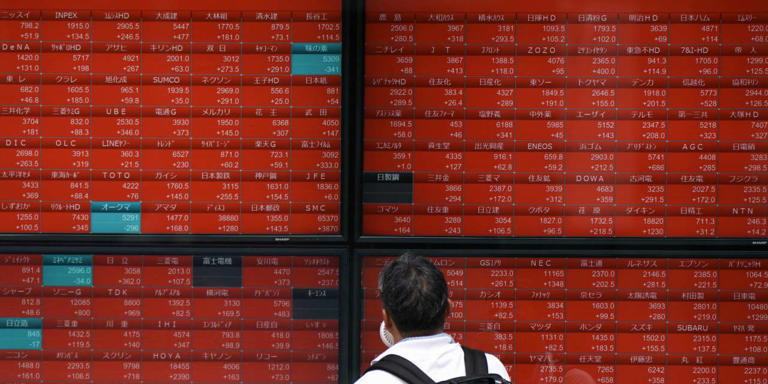Japan’s stock market experienced a robust rally on Tuesday, with the Nikkei 225 index surging to its highest level in nearly two weeks. This marked a significant rebound, effectively erasing the steep losses incurred during the dramatic plunge on August 5th, which had sent shockwaves through global equity markets.
The Nikkei 225 jumped by 3.45%, propelling it back above the 36,000 mark as the market reopened following Monday’s holiday. The recovery was fueled by a weakening yen, which provided a much-needed boost to Japanese exporters, and was further supported by positive momentum from rallies in European and U.S. markets. The weakening yen, trading around 148 versus the U.S. dollar by August 13 after strengthening to below 142 on August 5, played a crucial role in lifting investor sentiment, particularly benefiting the export-heavy components of the Nikkei.
This sharp turnaround followed a tumultuous period for the Nikkei 225, which had crashed by 12% to 31,458 on the previous Monday. The dramatic sell-off was triggered by growing concerns about the health of the U.S. economy and fears that technology stocks, a key driver of the global bull market, were overvalued. These worries created a risk-averse atmosphere across global bourses, leading to widespread selling.
The situation was further aggravated by a sudden rally in the Japanese yen. The yen’s sharp appreciation against the U.S. dollar created a ripple effect in the financial markets, particularly impacting carry trades—a popular strategy where traders borrow yen at low interest rates to invest in higher-yielding assets elsewhere. As the yen strengthened, traders were forced to unwind these positions, leading to a cascade of selling that intensified the downward pressure on Japanese equities.
However, the market found its footing as the yen began to weaken again. The yen’s depreciation was influenced by comments from officials at the Bank of Japan, who indicated that the central bank was unlikely to raise interest rates in the near future, especially given the recent market turmoil. This reassurance helped to stabilize the currency, alleviating some of the pressure on Japanese exporters and contributing to the stock market’s recovery.
Richard Hunter, head of markets at Interactive Investor, noted that the subsiding volatility in the yen had provided a significant lift to Japanese exporters and the broader market. “The recent sharp moves in the yen have subsided for now, boosting exporters generally and the main index in particular,” Hunter explained. He also highlighted that the Nikkei 225 had managed to regain a positive performance for the year, up nearly 9% despite the volatility of the previous week.
Despite the strong recovery, the Nikkei 225 remains about 13% below the record highs it achieved in July. This gap underscores the challenges that still lie ahead for the Japanese market, particularly as global economic uncertainties persist. Investors will be closely watching the ongoing developments in the U.S. economy, the trajectory of technology stocks, and the Bank of Japan’s monetary policy decisions, all of which could have significant implications for the future direction of the Nikkei 225.
In summary, Japan’s stock market has demonstrated resilience in the face of recent volatility, with the Nikkei 225 making a strong comeback. The weakening yen has played a crucial role in this recovery, particularly benefiting exporters, while positive developments in other major markets have provided additional support. However, the market remains below its recent peak, reflecting ongoing uncertainties that could influence its future trajectory.
